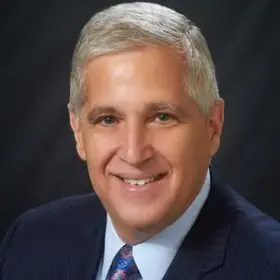By Steven Cohen, Ph.D., Director of the M.S. in Sustainability Management program, School of Professional Studies
New York City is slowly but surely reinventing itself as a sustainable city. Our energy system is becoming more efficient, and small amounts of renewable energy are being added to the electric grid. The City’s Department of Buildings is staffing up to enforce Local Law 97, which is designed to eventually decarbonize the city’s large buildings. According to Caroline Spivak’s report in last week’s Crain’s New York Business:
“The Adams administration has more than tripled the number of staff to enforce New York’s building climate law, Local Law 97, even in the face of a drawn-out legal fight that threatens to upend the contentious law ahead of a fast-approaching 2025 deadline for property owners to prove their buildings comply or face financial consequences. As of September, the Department of Buildings has a team of 30 full-time staff members dedicated to overseeing the building decarbonization law, and is onboarding another eight people that will imminently join the Local Law 97 team...There are an additional 20 positions that the city says it's rushing to fill leading up to the May 2025 deadline for building owners to submit reports to the city proving that they’ve begun to slash their carbon emissions.”
In the September 12th edition of the New York Law Review, my Columbia colleague Michael Gerrard summarized the state’s mixed record of progress in implementing the Climate Leadership and Community Protection Act. Noting Governor Hochul’s tepid commitment to these decarbonization goals, Professor Gerrard expressed his concern that we might not meet New York State’s ambitious decarbonization goals. Still, his piece details some of the progress made despite the persistence of the opposition by some business groups and politicos to paying the upfront costs of decarbonization.
Concern about costs is a theme of the entire effort to build a sustainable city. While a modern, decarbonized, and efficient energy system will reduce operating costs and increase the reliability of the city’s energy supply, the investments are required immediately while the benefits are realized in the long term. Very few politicians seem willing to invest resources that might impair their political popularity in the next election. Hochul is particularly short-sighted on these issues—as she’s demonstrated on congestion pricing and decarbonization as well as a variety of other environmental bills she’s vetoed.
While the path to urban sustainability in New York City frequently requires a step backward in return for two steps forward, on October 7th, 2024, the city will take a major step forward as it institutes city-wide pick up of residential organic waste. This was mandated by Local Law 85, enacted on June 8th, 2023. The Sanitation Department gradually implemented curbside organic recycling over the past two years and will finally go city-wide next month. The Sanitation Department has spent the past several years educating people about the new program and distributing re-sealable bins designed to keep food waste away from rats.
The challenge ahead for New York City is to ensure that the organic waste we are separating from the rest of the waste stream is recycled rather than sent to rot in a landfill where it would produce greenhouse gasses and pollute nearby aquifers. In a New York Times piece in April 2023, Robin Shulman Agüeros observed that the city had not yet put in place a system to recycle the city’s organic waste. According to her report:
“Officials hope to transform a problem into an asset, creating useful products like fertilizer and energy. The goal is to keep the city’s roughly eight million pounds of daily residential food waste from rotting in landfills, which produces harmful greenhouse gases, and to save costs on hauling food garbage. The plan’s success depends on developing local processing capacity not yet in place. And as officials ramp up the logistically complex program, they are working to reuse all the products they derive from the food… The food scraps collected in Queens go to two sites to be “digested” — microorganisms break down most of the material in tanks, creating biogas and a reduced mass of solid, nutrient-rich concentrate that can be used as a fertilizer or soil replacement. At one of the two sites, the Newtown Creek Wastewater Treatment Plant, food scraps collected from western Queens are mixed with sewage. Once processed, they produce more gas than is needed to heat the plant… On March 31, for the first time, the plant began consistently injecting cleaned and refined gas into the pipelines of National Grid to serve about 2,500 homes…”
A second method of recycling organic waste is by composting it and producing fertilizer. Agüeros described a 33-acre composting site on Staten Island that produced over 38,000 bags of fertilizer in 2022. Some combination of treatment alongside sewage treatment plants and composting will probably be utilized, with the goal of turning the cost of dumping waste into a revenue generator. Again, according to Agüeros:
“In New York, the city spends more than $400 million a year to move about 14 million tons of garbage to incinerators and landfills as far away as South Carolina. The city’s Independent Budget Office estimated last year that costs of food scrap collection would rise in the first three years, but with broad participation, would eventually save the city about $33 million a year.”
The savings come from avoiding the costs of transporting and dumping organic waste in landfills. Instead of generating revenues from these potentially valuable resources, we are paying tipping fees at landfills, which continue to increase as the land needed to build these dumps becomes more and more expensive. Last week, New York City awarded the first contracts designed to build the organic waste treatment facilities required to process the huge increase in waste that will be collected. The system that was not in place last year is now being built. Jacob Wallace, an editor of the Waste Dive website, wrote that:
“New York City awarded eight contracts to three companies to pre-process and decontaminate source-separated organics collected by the city’s sanitation department, public records show. The contracts, issued to WM, Denali Water Solutions and American Recycling, total more than $96 million. DSNY is in the process of rolling out residential organics collection throughout the five boroughs. Brooklyn and Queens have already begun receiving the service, while Manhattan, the Bronx and Staten Island are scheduled to begin service on Oct. 6. Contractors will have the option to either compost or anaerobically digest the organics themselves or pass a pre-processed product to the New York City Department of Environmental Protection, which can co-digest the material… The facilities DSNY is contracting with are spread across Queens; Brooklyn; the Bronx; Yonkers, New York; and Elizabeth, New Jersey. The contracts were all awarded in August.”
In energy, waste, and perhaps soon with mass transportation, New York is taking both small and large steps as it moves toward a circular economy. There is nothing fast or easy about this transition. Just as we transitioned from a manufacturing city in the middle of the 20th century to the service-centered city of the 21st century, the second quarter of the 21st century will be characterized by visible and significant progress toward a renewable resource-based economy. None of these transitions are pain-free. The city lost a million people and thousands of manufacturing jobs during the economic transition of the mid-twentieth century. The costs of rebuilding our energy, waste, water, climate resilience, and transportation infrastructure will result in winners and losers. Nevertheless, the long-term economic impact of a modern energy and waste management system will enable the city to continue to serve as the global capital of the brain-based creative economy. While I see two steps forward in energy and waste, the one step back this year was Governor Hochul’s disgraceful abandonment of congestion pricing. A sustainable city needs people to move more rapidly on the surface and more comfortably on mass transit. Perhaps we will see progress on transportation after the political pandering season takes a short break in mid-November.
Views and opinions expressed here are those of the authors, and do not necessarily reflect the official position of Columbia School of Professional Studies or Columbia University.
About the Program
The Columbia University M.S. in Sustainability Management program offered by the School of Professional Studies in partnership with the Climate School provides students cutting-edge policy and management tools they can use to help public and private organizations and governments address environmental impacts and risks, pollution control, and remediation to achieve sustainability. The program is customized for working professionals and is offered as both a full- and part-time course of study.



